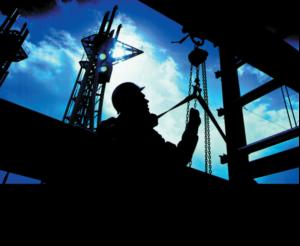

|
Edward Lowton
Editor |


|
| Home> | Handling and Storing | >Lifting equipment | >Thorough examination: Widespread confusion |
ARTICLE
Thorough examination: Widespread confusion
25 January 2013
The requirement to subject all lifting equipment to periodic thorough examination is one of the key elements of the Lifting Operations and Lifting Equipment Regulations (LOLER).However, Geoff Holden, CE of the Lifting Equi

The requirement to subject all lifting equipment to periodic
thorough examination is one of the key elements of the
Lifting Operations and Lifting Equipment Regulations
(LOLER).However, Geoff Holden, CE of the Lifting Equipment
Engineers Association (LEEA), says confusion exists about
how employers should go about meeting their obligation
The best starting point for guidance is the Approved Code of Practice that accompanies LOLER, and LEEA's long-established Code of Practice for the Safe Use of Lifting Equipment (COPSULE).
Both stress that, under LOLER, lifting equipment is taken to include any equipment that is used at work for lifting or lowering loads, including attachments used for anchoring, fixing or supporting them. It therefore covers a diverse array of equipment, including shackles, slings and load lifting attachments. All are covered by the requirements for thorough examination.
LOLER details when a thorough examination should take place. However, employers are often unclear as to what it actually involves. COPSULE's definition is 'a visual examination, carried out by a competent person carefully and critically and, where appropriate, supplemented by other means such as measurement and testing, in order to check whether the equipment is safe to use.' There is similar confusion over what constitutes a 'competent person.' It is perhaps best defined as a combination of technical knowledge of the equipment to be inspected, and the ability to put that knowledge into practice. The LEEA's well established Diploma programme provides an industryrecognised qualification and the Association now issues a 'TEAM' (Test, Examine And Maintain) identity card to engineers that have passed the Diploma examination, along with a logbook that details any relevant practical experience.
In many workplaces, simply keeping track of lifting equipment is a challenge. Every item must have an individual ID. Hard stamping is commonly used, but can cause problems on smaller items. Alternatives include colour-coded tags and, increasingly, RFID products which offer the ability to embed additional information and documentation. In all but the smallest operations, a central store and formal control and issue system is advisable.
While thorough examination is an important process, employers should never rely on it exclusively to ensure equipment remains fit-for-purpose. Lifting equipment often leads an arduous life. Accidental damage, corrosion, and attack by heat or chemicals are commonplace. Equipment should therefore also be subject to regular 'in-service inspection' by trained staff.
Typically this will not be a time-consuming task - a quick visual process and perhaps a simple operational test. However, those responsible must have the judgement and authority necessary to withdraw from service any item that poses a risk to health and safety. Failure to do so can have lethal consequences.
The best starting point for guidance is the Approved Code of Practice that accompanies LOLER, and LEEA's long-established Code of Practice for the Safe Use of Lifting Equipment (COPSULE).
Both stress that, under LOLER, lifting equipment is taken to include any equipment that is used at work for lifting or lowering loads, including attachments used for anchoring, fixing or supporting them. It therefore covers a diverse array of equipment, including shackles, slings and load lifting attachments. All are covered by the requirements for thorough examination.
LOLER details when a thorough examination should take place. However, employers are often unclear as to what it actually involves. COPSULE's definition is 'a visual examination, carried out by a competent person carefully and critically and, where appropriate, supplemented by other means such as measurement and testing, in order to check whether the equipment is safe to use.' There is similar confusion over what constitutes a 'competent person.' It is perhaps best defined as a combination of technical knowledge of the equipment to be inspected, and the ability to put that knowledge into practice. The LEEA's well established Diploma programme provides an industryrecognised qualification and the Association now issues a 'TEAM' (Test, Examine And Maintain) identity card to engineers that have passed the Diploma examination, along with a logbook that details any relevant practical experience.
In many workplaces, simply keeping track of lifting equipment is a challenge. Every item must have an individual ID. Hard stamping is commonly used, but can cause problems on smaller items. Alternatives include colour-coded tags and, increasingly, RFID products which offer the ability to embed additional information and documentation. In all but the smallest operations, a central store and formal control and issue system is advisable.
While thorough examination is an important process, employers should never rely on it exclusively to ensure equipment remains fit-for-purpose. Lifting equipment often leads an arduous life. Accidental damage, corrosion, and attack by heat or chemicals are commonplace. Equipment should therefore also be subject to regular 'in-service inspection' by trained staff.
Typically this will not be a time-consuming task - a quick visual process and perhaps a simple operational test. However, those responsible must have the judgement and authority necessary to withdraw from service any item that poses a risk to health and safety. Failure to do so can have lethal consequences.
MORE FROM THIS COMPANY
- LOLER: Time to voice support
- Back to lifting basics
- LEEA appoints Matt Barber as director of membership
- LEEA launches new reference guide
- LEEA appointed liaison for ISO/TC 96 Cranes Technical Committee
- Raising standards in manufacturing & maintenance
- Exhibition sells out
- LEEA South East Asia Regional Council holds first meeting
- LEEA launches Chatbot
- LEEA strengthens TEAM card scheme
OTHER ARTICLES IN THIS SECTION

















